 Last additions - Mishima 三島市 Last additions - Mishima 三島市 |

Signs in English including a QR code.Feb 08, 2018
|
|

Hiroshige's woodblock print of Mishima in his Tokaido Road series. Mishima Taisha's torii can be seen.Apr 24, 2011
|
|
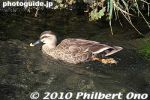
Nov 11, 2010
|
|

Nov 11, 2010
|
|
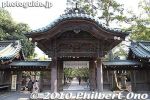
Nov 11, 2010
|
|
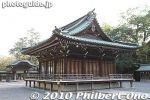
MaidenNov 11, 2010
|
|
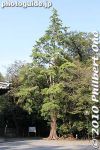
Nov 11, 2010
|
|
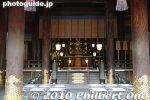
Nov 11, 2010
|
|
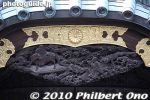
Nov 11, 2010
|
|

Mishima Taisha Shrine roofNov 11, 2010
|
|

Nov 11, 2010
|
|
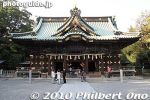
Mishima Taisha Shrine Honden is an Important Cultural Property.Nov 11, 2010
|
|
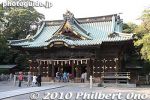
Nov 11, 2010
|
|
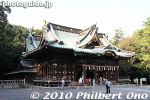
Mishima Taisha Shrine's Honden was destroyed by an earthquake in 1854. Rebuilt in 1869.Nov 11, 2010
|
|

Nov 11, 2010
|
|
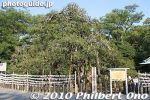
Famous and very old sweet olive tree (kinmokusei) キンモクセイ 金木犀Nov 11, 2010
|
|
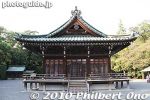
Buden Hall where sacred dances are performed. 舞殿Nov 11, 2010
|
|
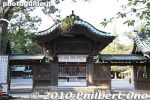
Shinmon Gate reconstructed in 1867. 神門Nov 11, 2010
|
|

Shrine gate.Nov 11, 2010
|
|
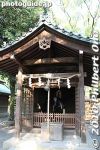
Sacred Horse Stable. No real horse though. 神馬舎Nov 11, 2010
|
|
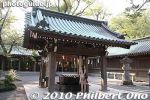
Purification was basin.Nov 11, 2010
|
|
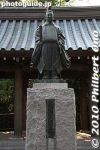
Statue of Yatabe Moriharu who helped to finance the reconstruction of Mishima Taisha after the great earthquake in 1854. 矢田部盛治の銅像Nov 11, 2010
|
|
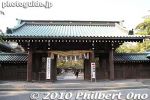
Somon Gate 総門(外構えの門)Nov 11, 2010
|
|
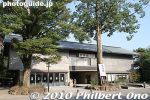
MIshima Taisha museum. 三嶋大社宝物館Nov 11, 2010
|
|
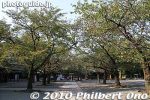
Path to shrine.Nov 11, 2010
|
|
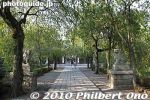
Nov 11, 2010
|
|
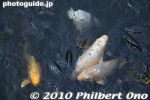
Carp in Shinchi Pond. 神池Nov 11, 2010
|
|
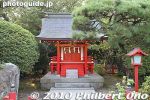
Itsukushima Shrine dedicated to Hojo Masako. 厳島神社Nov 11, 2010
|
|
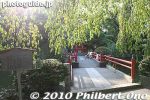
Bridge to Itsukushima Shrine in Shinchi Pond.Nov 11, 2010
|
|
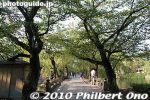
Nov 11, 2010
|
|
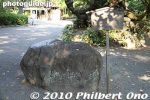
Tatari-ishi rock was used to separate foot traffic on the Tokaido and Shimoda Kaido roads. Each time it was removed, something bad happened. So they left the rock in place. たたり石Nov 11, 2010
|
|
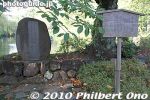
Bokusui poetry monument. 牧水歌碑のずえなる 三島のまちのあげはなび 月夜の空に 消えて散るなりNov 11, 2010
|
|
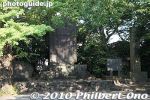
The shrine has numerous monuments.Nov 11, 2010
|
|
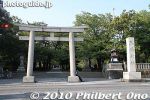
Mishima Taisha Shrine in Shizuoka Pref. This is the main torii. Townsend Harris, US consul to Japan, visited here when he was on his way to Tokyo from Shimoda.Nov 11, 2010
|
|
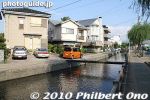
Nov 11, 2010
|
|
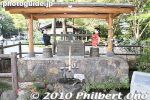
Megumi-no-te water fountain at Shirataki ParkNov 11, 2010
|
|
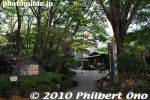
Another entrance to Rakujuen where I exited.Nov 11, 2010
|
|
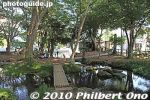
Next to Rakujuen is a small park called Shirataki Park. 白滝公園Nov 11, 2010
|
|
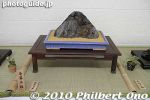
They had a rock garden display when I was there.Nov 11, 2010
|
|
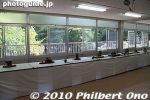
Rest house exhibition space on the 2nd floor.Nov 11, 2010
|
|
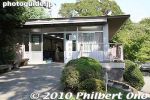
Rest house has an exhibition space on the 2nd floor.Nov 11, 2010
|
|
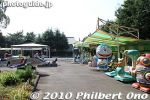
Nov 11, 2010
|
|
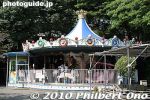
Rakujuen also has a small amusement park.Nov 11, 2010
|
|
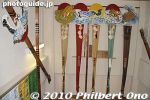
Nov 11, 2010
|
|
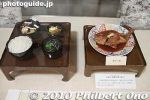
Meal served at Mishima-juku's Honjin lodge for VIPs.Nov 11, 2010
|
|
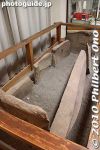
Kofun tumulus coffinNov 11, 2010
|
|
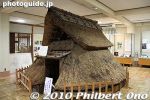
Yayoi Period shackNov 11, 2010
|
|
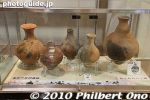
PotteryNov 11, 2010
|
|
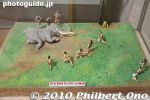
Stone Age modelNov 11, 2010
|
|
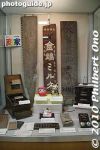
Mishima shop signsNov 11, 2010
|
|
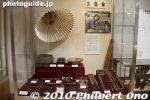
Mishima umbrellasNov 11, 2010
|
|
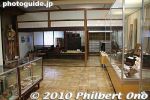
Nov 11, 2010
|
|
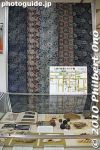
Local Mishima crafts.Nov 11, 2010
|
|
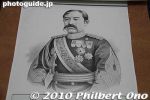
Prince Komatsu Akihito, the original owner of Rakujuen.Nov 11, 2010
|
|
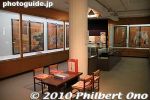
Inside Mishima Folk History Museum.Nov 11, 2010
|
|
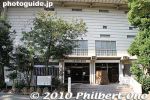
Mishima Folk History Museum is also in Rakujuen Garden. 三島市郷土資料館Nov 11, 2010
|
|
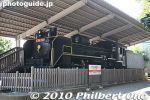
Retired steam locomotive from 1942 on display. 蒸気機関車Nov 11, 2010
|
|
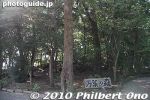
Manyo no Mori forestNov 11, 2010
|
|
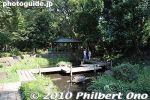
Nov 11, 2010
|
|
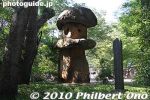
Giant stone lantern.Nov 11, 2010
|
|
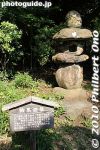
Nov 11, 2010
|
|
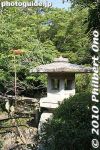
Lots of stone lanterns.Nov 11, 2010
|
|
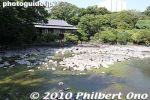
Nov 11, 2010
|
|
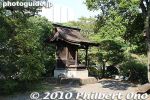
MiyajimaNov 11, 2010
|
|

Nov 11, 2010
|
|
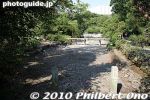
Nov 11, 2010
|
|
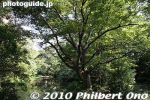
Nov 11, 2010
|
|
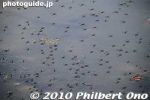
Nov 11, 2010
|
|
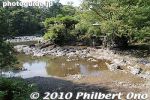
Nov 11, 2010
|
|
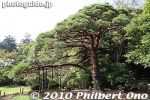
Pine tree いこいの松Nov 11, 2010
|
|
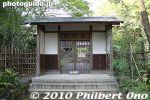
Entrance to another villa, called Ume Goten (closed to the public). 梅御殿Nov 11, 2010
|
|
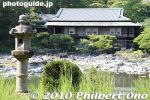
Rakujuen Garden and Rakujukan villa, Mishima, Shizuoka.Nov 11, 2010
|
|
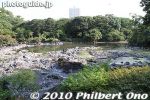
Rakujuen Garden as viewed from the veranda of Rakujukan villa, Mishima, Shizuoka. Photography was not allowed inside the spacious villa.Nov 11, 2010
|
|
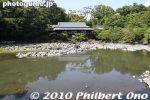
Rakujuen Garden, Mishima, Shizuoka. This is Kohama Pond whose water is supplied by natural springs. However, the pond always lacks water. 小浜池Nov 11, 2010
|
|
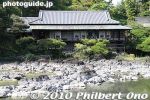
Rakujukan in Rakujuen Garden. The villa was originally built for Prince Komatsu Akihito. The rocks originate from Mt. Fuji lava flows. 楽寿館Nov 11, 2010
|
|

About Rakujukan. In 1911, Rakujuen became the villa of Korean Crown Prince Euimin. In 1927, the property was sold to a local financier. The city of Mishima bought it in 1952. Nov 11, 2010
|
|
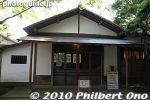
Entrance to Rakujukan villa. 30-min. guided tours are provided at certain times. Just wait in front of the entrance a few minutes before the tour starts. 楽寿館Nov 11, 2010
|
|
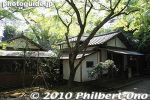
Rakujukan villaNov 11, 2010
|
|
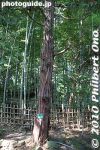
Hinoki cypress, another coveted tree species in Japan.Nov 11, 2010
|
|
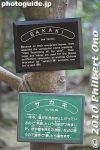
About the Sakaki tree.Nov 11, 2010
|
|
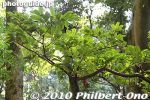
Sakaki tree whose leaves and branches are used in Shinto ceremonies.Nov 11, 2010
|
|
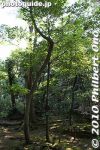
Sakaki tree whose leaves and branches are used in Shinto ceremonies.Nov 11, 2010
|
|

Map of Rakujuen Garden. Mishima Station is at the top. Japanese garden and villa formerly owned by Prince Komatsu Akihito in the late 19th century. The city of Mishima eventually bought the property in 1954 and opened it as a public garden. 楽寿園Nov 11, 2010
|
|

About the Noe-bushi traditional folk dance. It is performed at the Mishima Matsuri festival in summer. 農兵節 ノーエ節Nov 11, 2010
|
|
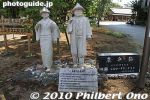
Monument for Noe-bushi traditional folk dance started in Mishima. 農兵節 ノーエ節Nov 11, 2010
|
|
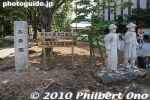
Entrance to Rakujuen Garden, a short walk from Mishima Station's South Exit. Across the street is the Mishima Tourist Info Office where you can pick up pamphlets and ask for directions.Nov 11, 2010
|
|
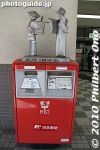
Folk dancer sculpture on mail box at Mishima Station.Nov 11, 2010
|
|
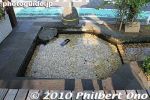
Hot spring foot bath at Mishima Station. Nov 11, 2010
|
|
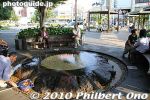
Hot spring foot bath at Mishima Station. Perfect remedy for tired travelers.Nov 11, 2010
|
|
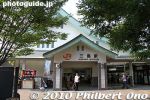
JR Mishima Station on the Tokaido Line. The station building is designed after Mt. Fuji.Nov 11, 2010
|
|
|
|
|
|